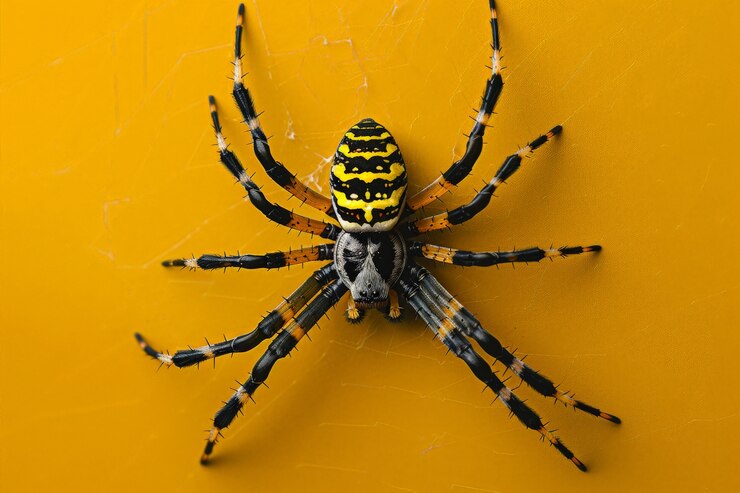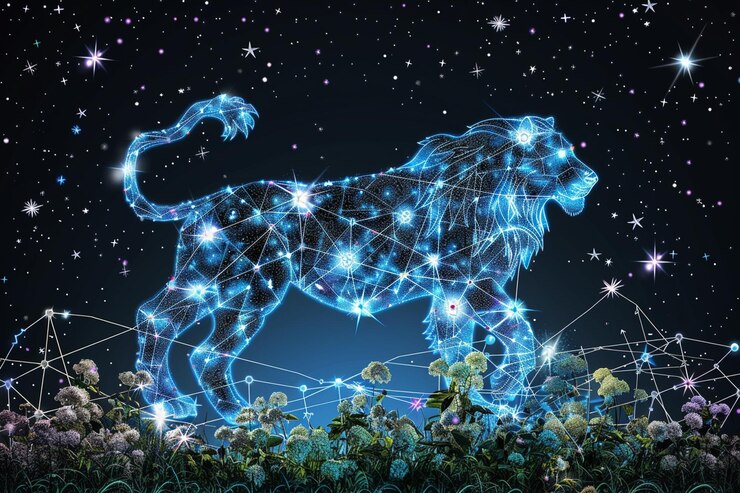Banana spider, also known as Golden Silk Orb-Weavers, are a group of large, colorful, and often misunderstood spiders found in various parts of the world. While they may look intimidating, these spiders are largely harmless to humans. Their intricate webs, vibrant appearance, and ecological significance make them a subject of great interest for both scientists and nature enthusiasts. In this article, we’ll dive into the fascinating world of banana spiders, exploring their habitat, behavior, diet, and much more.
What is a Banana Spider?
The term banana spider is used to refer to multiple species of spiders, but it most commonly points to the Golden Silk Orb-Weaver (Nephila species), named after the golden hue of the silk they use to spin their webs. They are also known as writing spiders or banana spiders because they are sometimes found in banana shipments, leading to occasional confusion.
These spiders are known for their distinctive colors, which can range from vibrant yellow to red and white, with some having striking patterns on their bodies. Females are significantly larger than males, often reaching body lengths of up to 2 inches (5 cm), while their leg span can be as long as 5 inches (12 cm).
Species and Distribution
Banana spiders can be found in tropical and subtropical regions around the globe, including North America, South America, Asia, Africa, and Australia. They prefer warm, humid climates and are often spotted in forests, gardens, and woodlands where they can build large, impressive webs.
The most notable species include:
- Nephila clavipes (native to the Americas)
- Nephila pilipes (found in Southeast Asia)
- Nephila senegalensis (native to Africa)
Banana spiders, specifically referring to Golden Silk Orb-Weavers (Nephila species), have a distinctive and striking appearance. Here’s what they typically look like:
1. Body Size and Shape
- Females are significantly larger than males, with body lengths of up to 2 inches (5 cm), while their leg span can be as long as 5 inches (12 cm).
- Males are much smaller, usually less than half the size of the females.
2. Coloration
- Their bodies are typically yellow, orange, or red, often with intricate white or black markings.
- Females have elongated abdomens that are sometimes yellowish-green, and their heads and legs often have black or brown patterns.
- Males are smaller, often duller in color, with brown or darker hues.
3. Legs
- Banana spiders have long, thin legs that are often banded with yellow and black or brown patterns.
- Their legs have tufts of hair, which help them sense vibrations from their web.
4. Web Color
- One of their most distinctive features is their golden-hued silk, which gives their webs a shimmering, golden appearance when caught in sunlight. This is a unique characteristic not found in many other spiders.
In summary, banana spiders are easily recognized by their large size, vibrant colors, and the golden sheen of their webs, making them one of the more visually striking spiders in the natural world.
Banana Spider Behavior
Despite their daunting size and striking appearance, banana spiders are relatively docile creatures. They are not aggressive toward humans and typically flee when disturbed. Like most spiders, they rely on their webs to capture food. Once an insect is trapped in the web, the spider quickly immobilizes it with venom and wraps it in silk for later consumption.
The venom of a banana spider is not harmful to humans, although a bite may cause mild pain, redness, or swelling similar to a bee sting. Their venom is designed to subdue their prey, which consists mostly of small insects, and is not potent enough to cause any serious harm to larger animals or people.
Mating Behavior
During the mating season, much smaller male banana spiders will approach the female’s web, often cautiously, as there is a risk of being eaten by the female after mating. Females lay hundreds of eggs, which are encased in a sac and attached to the web. The young spiders, once hatched, disperse quickly to avoid being eaten by their siblings or by the mother.
Banana Spider Diet
Banana spiders, primarily the Golden Silk Orb-Weavers (Nephila species), are carnivorous and rely on their webs to capture their prey. Their diet consists mainly of small to medium-sized insects, though they can occasionally catch larger prey. Here’s a breakdown of what banana spiders typically eat:
Primary Diet
- Insects:
- Flies
- Bees
- Moths
- Mosquitoes
- Butterflies
- Grasshoppers
These insects are attracted to the golden sheen of the spider’s web or accidentally fly into it. Once trapped, the spider quickly immobilizes the prey with venom.
Occasional Prey
- Larger Insects:
- Cicadas
- Crickets
- Dragonflies
While smaller insects form the bulk of their diet, banana spiders can sometimes catch larger insects in their sturdy webs.
- Small Vertebrates (Rarely):
- In some cases, banana spiders have been known to capture small birds, bats, or lizards that get tangled in their large webs. This is rare, but the spider’s venom and strong silk can handle larger prey.
Feeding Process
Once an insect gets caught in the web:
- The banana spider rushes to the prey and bites it, injecting venom that paralyzes and liquefies the insides of the prey.
- The spider then wraps the prey in silk, storing it for later consumption or immediately starts feeding by sucking out the liquidized nutrients.
Where Do Banana Spiders Live?
Banana spiders, specifically the Golden Silk Orb-Weavers (Nephila species), are found in a variety of habitats, primarily in tropical and subtropical regions. These spiders prefer warm, humid climates and are known for building their large, golden webs in areas with abundant sunlight and vegetation. Here’s a closer look at their typical habitats and geographic distribution:
Geographic Distribution
Banana spiders are distributed across several regions around the globe, including:
- North America: Found primarily in the southeastern United States, including states like Florida, Georgia, Louisiana, and South Carolina. They are especially common in coastal areas and marshlands.
- Central and South America: Banana spiders thrive in tropical rainforests and forests of countries such as Brazil, Costa Rica, and Colombia.
- Southeast Asia: Species like Nephila pilipes can be found in countries such as Indonesia, Thailand, Malaysia, and Philippines.
- Africa: Particularly in central and southern parts of Africa, such as Senegal and South Africa.
- Australia: They are also native to the northern and eastern regions of Australia.
Preferred Habitat
Banana spiders typically inhabit areas with plenty of vegetation and open space where they can construct their large, intricate webs. They are found in:
- Tropical rainforests
- Woodlands and forests
- Swamps and marshes
- Gardens and fields
- Near coastal regions
Web Placement
Banana spiders often build their webs in sunny, open areas:
- Between trees and shrubs
- Along trails or pathways
- In gardens or backyards
Their webs can be found at varying heights, sometimes close to the ground or suspended high between trees, depending on the prey they are targeting.
Urban Environments
In some cases, banana spiders can adapt to urban or semi-urban environments, building their webs in gardens, near buildings, or in parks, where insects are plentiful. However, they prefer areas with less human disturbance and more natural surroundings.
Seasonality
In regions with colder winters, banana spiders are most active during late summer and early fall, when temperatures are warm. They typically die off in winter, but the eggs they lay survive, hatching the following spring.
Are Banana Spiders Dangerous to Humans?
Despite their fearsome appearance, banana spiders are not dangerous to humans. Their bites are rare and typically only occur when the spider feels threatened or cornered. The effects of a bite are usually mild and may include localized swelling, itching, and pain, but these symptoms generally subside within a few hours. It’s important to note that allergic reactions are possible, though extremely rare.
Conclusion
The banana spider, or Golden Silk Orb-Weaver, is a fascinating arachnid that contributes significantly to the ecosystems it inhabits. While they may look intimidating, they are generally harmless to humans and play a vital role in controlling insect populations. Their golden webs, which shine like strands of precious metal, are not only beautiful but also incredibly strong. Understanding and appreciating these creatures can help dispel common fears and highlight the importance of spiders in nature.
FAQs About Banana Spiders
Q1: Are banana spiders poisonous?
A: While banana spiders have venom, it is not dangerous to humans. Bites may cause mild symptoms like swelling or redness, similar to a bee sting.
Q2: Why are banana spider webs golden?
A: The golden color of their silk may help attract prey by blending in with sunlight or offer protection from UV damage.
Q3: Where do banana spiders live?
A: Banana spiders are found in tropical and subtropical regions, including the Americas, Africa, Asia, and Australia.
Q4: What do banana spiders eat?
A: Banana spiders primarily feed on insects like flies, moths, and grasshoppers, which they catch in their webs.
Q5: How big can banana spiders get?
A: Female banana spiders can have a body length of up to 2 inches, with a leg span of around 5 inches. Males are significantly smaller.














